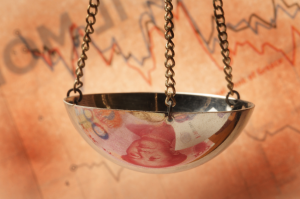Article by Eric Purvis, Director of TAA Planning.
Methods of valuation compared
Empirical research conducted by the Pepperdine Private Capital Markets Project indicates that approximately 40% of all companies that are brought to market do not result in a transaction, with the largest reason for failure being a value gap in the expectations between buyer and seller. (Kenneth J. Sanginario, The Value Examiner, Nov/Dec 2013)
You’ll be reading this article because you are interested in understanding the value of your business. You may want to exit, free up some time, sell, or enter into some kind of agreement with another business – or you might be looking at bank finance. Whatever the case, you want to know your business’ true value, right?
Obviously the first step in understanding how to liquidate, leverage, or build value is establishing a baseline. This means you’re going to need a detailed business valuation. Owners often think they know their company’s value, but in reality they’re shockingly off the mark.
A business appraisal firm surveyed 2,000 business owners and found that most misjudged the value of their businesses by 50% or more — and sometimes by millions of dollars. Worryingly, over half of business owners overestimated the value of their companies. The major problem this can cause is that people embarking on any kind of venture, growth strategy, or exit, are banking on a certain amount of financial capacity. But in fact, they are sometimes significantly overestimating this capacity.
The methods most commonly used to establish a business’ value are:
Current marketplace value
You look at average current marketplace values of similar businesses within your industry. Generally you will be relying on ABS statistics and industry benchmarking.
The return on investment method
To work out the ROI, you use the formula:
ROI = (net profit annual/selling price) x 100
This will give you an ROI as a percentage, and you can then decide if this percentage is appropriate as a way to calculate the value of your business.
Asset value
If you’re going to calculate your business assets to determine a value, you should include both tangible and intangible assets. Tangible assets are physical things such as tools, equipment, and property; whereas intangible assets are things that can’t be touched such as intellectual property, brands and business goodwill. You can use the total asset value as an indication of your business’ overall value, but remember that assessing your assets’ value can be a complicated process, so it’s a good idea to seek expert help.
Estimate the future profits
The greatest value of your business, from the buyer’s perspective, is future profits generated. You can estimate this by looking at trends in your finances across past years. You can also use trends of similar businesses in your industry to see how your business compares and how the market is going. Again, this is complicated stuff and it’s best to seek expert advice.
From scratch value
The cost of creating your business from scratch (in the current market) can be used as a benchmark for valuing your business. Include factors like stock purchase, premises costs, insurances, wages/salaries, training, marketing, goodwill and reputation, customer base, leads, product development, equipment or plant purchase, branding, and so on.
A note on Saleability
In addition to understanding the value of your company you also need to understand how saleable your business is. Value and saleability are not always the same. Saleability determines how quickly a business will sell and how much leverage a business owner will have when negotiating with a buyer. It depends to a large extent on external market conditions. External conditions are things that are out of your direct control like business, market or financial conditions. For example, the option of selling your business for cash to an outside buyer may be eliminated because of a downturn in your business or industry.
Which method is best?
Fact is, the best method is to use all of these approaches in combination. Sound complicated? It is. Establishing a baseline value for the business is most likely something you won’t be able to do by yourself, and it’s certainly something I wouldn’t recommend doing by yourself.
It’s vitally important to draw on objective expertise. Have your business valued by an experienced valuation professional, and then reduce those results in your financial planning models so you err on the side of a conservative value.
Have you ever had your business valued? What was your experience?



Recent Comments